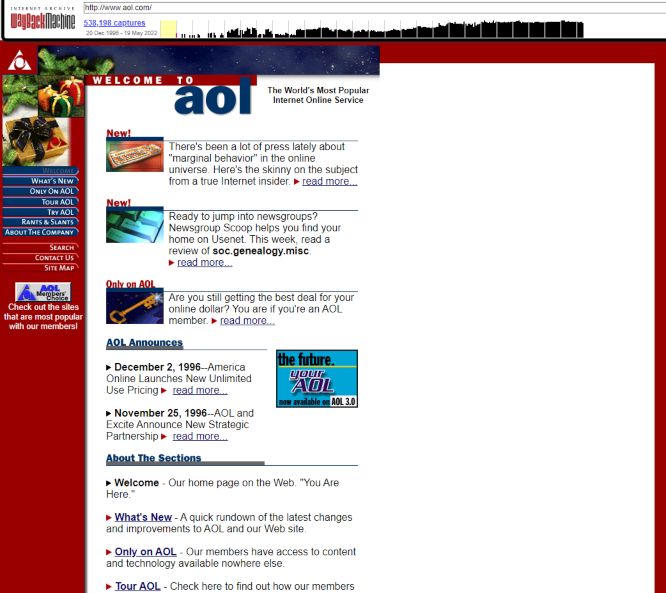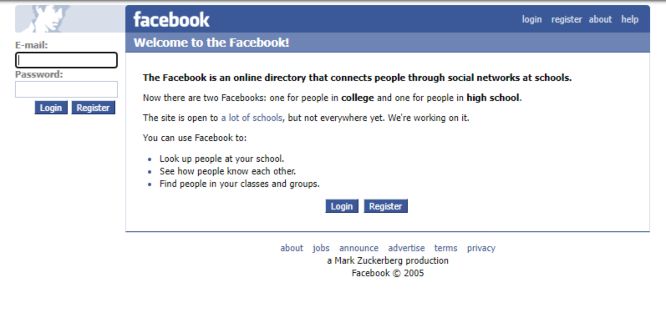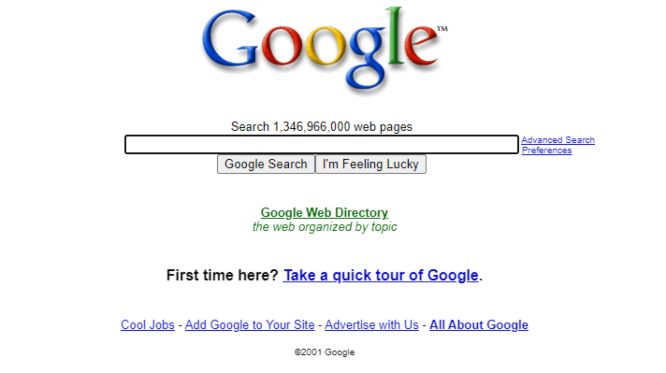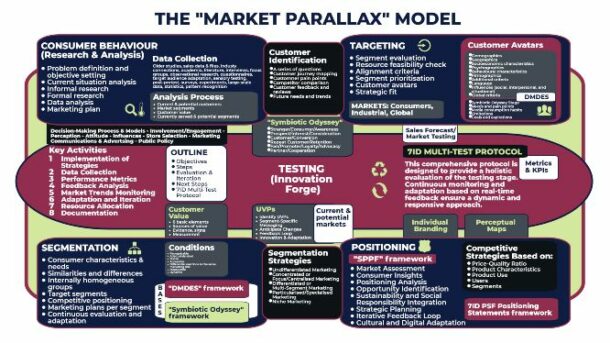The Internet has been a blessing for businesses and opened up countless opportunities for everyday people around the world.
During the last 10 years alone, we witnessed an explosion of online entrepreneurship. People started chasing their big dreams from the comfort of their homes. With an internet connection, a laptop, tablet, or mobile phone, anyone could pursue business ideas by entering an ever-growing and extremely competitive marketplace.
The internet reduced the cost of running a business to the minimum and helped business owners connect with audiences in unimaginable ways and impact the world like never before.
Yet, we feel that something is not quite right. Something is going wrong. We’ve lost our direction and big problems have come to the surface.
But let’s take things from the start and let’s see how the internet has evolved and the consequences for businesses and marketing professionals. I’m sure we’ll find plenty of answers to help us prepare for what’s coming next.
Yes, things are changing pretty fast and those who are not well-equipped will get left behind.
Web 3.0 Implications In Marketing
& the history of the web
Video Script
Are you ready for the next version of the web 3.0? are you really prepared as a business owner?
So far the internet has been a blessing as it reduced the cost of running a business to the minimum and helped us connect with audiences easily, affordably, and very effectively.
But in the current 2nd version of the web we’ve lost our direction, consumers lost control of their privacy and data, and big problems came to the surface.
So, I want to take things from the start and let’s see how the internet has evolved and the consequences for businesses.
The world has changed, marketing has changed, the way we approach consumers has changed, and Web 3.0 is a disruption to the current status quo and it creates a whole new world of opportunities.
I’m discussing these topics on my blog since last summer, but during the last months, things accelerated and I had the privilege to collaborate with many industry leaders, innovative marketing professionals and consultants, and all of them agree that we are entering a new era.
Now, on this page, you’ll find critical information about the history of the web. From the early 1990s when the web as we know it became available publicly, to the next version of the web, 2.0 that came along in 2004, our current era, and I discuss what the 3rd era of the web means.
And in a nutshell, Web 3.0 is an attempt to give control back to its users because right now big tech companies and giant corporations control user data, and data is today’s currency in the entrepreneurial space.
This centralization of data caused a series of major problems for business owners and consumers such as the rise in advertising costs, the decline in the effectiveness of those advertisements, very bad user experiences, and complaints.
So, we are moving away from an unsafe and insecure web to a new environment, away from hunting money and maximizing profits to impacting the world and changing lives as business owners and leaders, and away from 3rd-party data on which we relied heavily up until now to 1st-party data and zero-party data.
Also, we have to reshape our strategies for traffic, the way we run ads, the way we structure our privacy policy, product development and launches, emails, funnels, and so much more.
This shift is going to disrupt the whole advertising industry.
So go on, read the article, it has information that you want to read carefully, there are statistics, facts, names, and dates, and I list all the problems associated with Web 2.0.
The article will help you get prepared for what’s coming next.
And we’re prepared as a marketing agency, we have our own methodology, the “7 Ideals”, it’s a value-driven customer-centric approach and during the next days, we’ll be exploring a series of topics related to Web 3.0 and the new era of entrepreneurship and marketing.
Have in mind that we can’t do marketing the way we did last year.
So, stay in touch, sign up for our newsletter and get more information about our methodology and the new beta group that we kick off very shortly.
Web 1.0 – Early Days
In the first stage of the World Wide Web’s evolution, Web 1.0, the vast majority of internet users were consuming content. Only a few knew how to publish content, it was too technical. This era is also known as the “read-only” web.
Tim Berners-Lee invented the World Wide Web while working at CERN in 1989, applying the concept of hyperlinking that had by then existed for some decades. He developed the first web server, the first web browser, and a document formatting protocol, called Hypertext Markup Language (HTML), which he based on the concepts of Standard Generalized Markup Language (SGML).
The Web came into general use by c. 1994, when websites of general interest became available. This spurred competition in server and browser software, highlighted in the “Browser Wars” which was initially dominated by Netscape Navigator and Internet Explorer. Following the complete removal of commercial restrictions on Internet use by c. 1995, the commercialization of the Web amidst macroeconomic factors led to the dot-com boom (bubble) and bust in the late 1990s and early 2000s.
Web 1.0 was open-source and anyone could build upon it.
There were personal web pages, static pages, pages built using Server Side Includes (SSI ) or Common Gateway Interface (CGI), HTML elements such as iframes and tables, HTML extensions, online guestbooks (instead of comment sections on websites), GIF buttons, HTML forms sent via email, etc.
The internet connections were very slow and we were trying to connect via dial-up, a system that was not working properly most of the time.
But the most important thing is that information was finally available to everyone.
This detail alone changed our lives forever.
We could find information without having to travel and spend money and we started learning new things.
I remember my very first online experience at the university in a crowded room full of computers connected to the internet. I remember AOL, Yahoo, MSN, and platforms where you could play games with others, chat rooms, and sites full of text.
Brands started spending money on advertising their products and services on other properties.
These brands that had an online presence were dominating the market.
Eventually, more and more people got connected online, and more and more brands expanded their operations online because they saw the opportunity, and it was apparent that a new web version was needed.
AOL in 1996
Web 2.0 – Current Era
New technological advancements along with the exponential growth of mobile devices and laptops, and the birth of big tech companies led to a new era, Web 2.0, also known as “the web as platform”, “participative web”, “social web”, and the “read-write” web.
The term was coined by Darcy DiNucci in 1999 and later popularized by Tim O’Reilly and Dale Dougherty at the first Web 2.0 Conference in late 2004.
According to Wikipedia, Netscape framed “the web as platform” in terms of the old software paradigm: their flagship product was the web browser, a desktop application, and their strategy was to use their dominance in the browser market to establish a market for high-priced server products.
We witnessed the rise of social media platforms like Twitter, Facebook, YouTube, Tumblr, Pinterest, and so many more.
People with no technical skills or experience could build their own web pages and blogs using platforms like WordPress or Wix, build their own online stores using platforms like Shopify, BigCommerce, WooCommerce, and Magento, comment on other sites, create user accounts and profiles, share videos, images, and stories, buy and sell things on digital marketplaces, entertain and educate themselves, literally everything.
According to Best, the characteristics of Web 2.0 are rich user experience, user participation, dynamic content, metadata, web standards, and scalability. Further characteristics, such as openness, freedom, and collective intelligence by way of user participation, can also be viewed as essential attributes of Web 2.0.
The big tech companies also known as the Tech Giants, GAFA, Big Four, or Big Five, is a name given to the present four or five largest, most dominant, and most prestigious companies in the information technology industry of the United States. The Big Four consists of Alphabet (Google), Amazon, Apple, and Meta (Facebook) with Microsoft completing the big five.
The tech giants are the dominant players in their respective areas of technology, namely: e-commerce, online advertising, consumer electronics, cloud computing, computer software, media streaming, artificial intelligence, smart home, self-driving cars, and social networking. They have been among the most valuable public companies globally.
The big tech companies took advantage of the Web 1.0 open-source code and built new systems securing and protecting their technologies and outpacing the capabilities of open protocols.
And so we moved from the open-source web to a closed-source web with data being centralized.
%
About 90% of U.S. and European banks had started exploring blockchain’s potential by 2018
The tech soon-to-be giants started offering advertising and other services and small business owners found a way to promote and sell their products and services easily, affordably, and very effectively.
In this phase, we start noticing big changes in the way people consume content online. The ever-increasing use of search engines like Google and Bing, and social media platforms led to totalitarian control in the hands of the big tech companies.
Search engines rank websites based on their complex algorithms and present users with related results that they find appropriate based on users’ queries.
As more and more companies started competing for search engine rankings and social media exposure and as the big tech companies were changing and altering their algorithms at a fast pace, we witnessed the rise of advertising costs and a decline in the effectiveness of those advertisements.
On top of that, brands all over the world were bombarding consumers with 1,000’s ads on a daily basis resulting in a bad user experience.
You could see an ad somewhere and then, all of the sudden, this ad was following you on other web properties throughout the day or even for days to come.
We marketers played our role too. We oversaturated the marketplace with retargeting ads to help our clients sell more and make more money ourselves.
Data became the most valuable resource online and the big tech companies were dominating this arena.
But having all this data stored in centralized servers was actually a target.
And so a dance of data breaches had unfolded.
The Equifax data breach occurred between May and July 2017 at the American credit bureau Equifax. Private records of 147.9 million Americans along with 15.2 million British citizens and about 19,000 Canadian citizens were compromised in the breach, making it one of the largest cybercrimes related to identity theft. In a settlement with the United States Federal Trade Commission, Equifax offered affected users settlement funds and free credit monitoring.
TeamPassword made a list of Facebook’s security breaches. In 2005, 2013, 2014, 2019, and 2021 the social colossus turned its users down.
FirewallTimes compiled a similar list for Google.
Users started gaining more control of their private data (GDPR, CCPA), and how they are being tracked by apps and websites, and millions of them now use ad blockers.
Some websites, even mainstream media use software to block ad-blockers and users are not able to browse web pages without turning their ad-blocker off or installing ad-light versions.
Incredible stuff! Caring about user experience at its best.
Remember the latest iOS updates where business owners and marketers got panicked for good? These updates affected all the ad platforms that exist. We had to change the way we run ads.
More than 20 countries have adopted or at least researched the concept of a national cryptocurrency.
We had to face even bigger problems regarding data. Remember PRISM?
PRISM beyond being a solid geometric figure whose two end faces are similar, equal, and parallel rectilinear figures, and whose sides are parallelograms, it’s also a code name for a program under which the United States National Security Agency (NSA) collects internet communications from various U.S. internet companies.
The program is also known as the SIGAD US-984XN. PRISM collects stored internet communications based on demands made to internet companies such as Google LLC under Section 702 of the FISA Amendments Act of 2008 to turn over any data that match court-approved search terms.
Among other things, the NSA can use these PRISM requests to target communications that were encrypted when they traveled across the internet backbone, to focus on stored data that telecommunication filtering systems discarded earlier, and to get data that is easier to handle.
PRISM began in 2007 in the wake of the passage of the Protect America Act under the Bush Administration. The program is operated under the supervision of the U.S. Foreign Intelligence Surveillance Court (FISA Court, or FISC) pursuant to the Foreign Intelligence Surveillance Act (FISA).
Its existence was leaked six years later by NSA contractor Edward Snowden, who warned that the extent of mass data collection was far greater than the public knew and included what he characterized as “dangerous” and “criminal” activities.
%
74% of tech-savvy executive teams say they believe there’s huge business potential in blockchain technology
We had to deal with censorship quite often during the last years.
I remember so many partners who had never been able to advertise their products and services on Google, Facebook, and other platforms just because they were educating people on finances or cryptocurrencies.
The same was true for health-related products and advice during the latest pandemic.
I had to deal with the same problem as well mainly on advertising platforms.
Everything that was not in complete alliance with the official dogma, had been rejected as inappropriate content.
Freedom of speech at its best.
TheVerge sheds some light on the case of Turkey vs Wikipedia.
They say: When the Turkish government suddenly banned Wikipedia in late April last year, it came as little surprise to many people in the country. Access to platforms including Twitter, Facebook, Instagram, YouTube, and WhatsApp have been periodically restricted in Turkey numerous times since 2014, particularly after tumultuous events like mass demonstrations, suicide bomb attacks, or the failed coup attempt in July 2016. What’s strange is that the ban stayed. As of this Sunday, Wikipedia has been blocked in the country for a full year.
NetBlocks metrics confirmed the restriction of Instagram in Russia from the night of Sunday 13 March 2022. The incident follows the earlier restriction of Twitter and Facebook as Russia cracks down on international social media platforms after its invasion of Ukraine.
NPR mentioned…
Russian authorities called for Facebook parent Meta to be labeled an extremist organization and said they would restrict access to its Instagram app after the social media giant said it would temporarily permit some calls for violence against Russian soldiers.
Russian regulators already have banned access to Facebook in the country.
NDTV reported that Russian regulators on Friday accused US tech giant Google and its video subsidiary YouTube of “terrorist” activities, the first step towards a possible access ban.
Russia has already blocked access to other global tech giants including Facebook, Twitter and Instagram as well as several independent media.
Related:
Another problem we had to deal with was trademarked words in advertising.
It’s OK to trademark a company name or something similar or your own name but trademark common words just because they match your brand?
Someone trademarked the word “attitude” because their brand is “Attitude”. And someone else trademarked the word “apple”. But their company is not just “apple” or “attitude”, it’s “Apple Inc. and Attitude Inc”.
So if I want to advertise a product that helps you with your attitude or if I want to sell my apples, I can’t. Some platforms don’t even allow these words in descriptions (beyond headlines).
But what if I register 1 million new businesses the next morning? All of them with common words and trademark them?
Or what if I register this company name “Global Education Systems, Procedures, & Mechanisms For Independent Financial Entities and Businesses Inc.” and then I trademark the brand name without the inc extension.
What if someone like Elon Musk does the same for all the words that exist and then no one else can run ads online.
Or even better. Let’s trademark letters.
%
24% of companies expect to invest between $5 million and $10 million in blockchain during 2021
Cryptocurrency crime had a record-breaking year in 2021, with a new report finding scammers took $14 billion worth of crypto last year.
Cybercrime is on the rise in America, with more than 143 million Americans affected by cybercrime in 2017, according to the Norton Cyber Security Insights Report. Nearly 8 in 10 U.S. consumers surveyed reported themselves or someone they know being victimized, so it’s understandable that Americans are worried more about cybercrimes than other crimes.
Other crimes we had to deal with include:
- Malware
- Debit or credit card fraud
- Data breaches (see above)
- Compromised passwords
- Unauthorized email and social media access
- Phishing
- Harassment
- Ransomware
- Prostitution
- Child pornography and solicitation
- Human trafficking
- Intellectual property theft
- Account hacking
- Drug trafficking
- and more
Not a very safe place to do business!
More than 143 million Americans affected by cybercrime in 2017
And so a new shift was inevitable.
Now, we are moving toward a cookieless world and entrepreneurs are more concerned than ever before.
We are entering the 3rd web era…
Don’t worry, there is a lot we can do, big changes lead to opportunities but only for those who are prepared and will take action.
I’ve discussed it countless times, brands that are in it for maximizing their profits instead of providing superior user experiences are doomed to fail.
Facebook in 2005
Web 3.0 – Control Exchange
Web3 (also known as Web 3.0 and sometimes stylized as web3) is an idea for a new iteration of the World Wide Web based on blockchain technology, which incorporates concepts such as decentralization and token-based economics.
Some technologists and journalists have contrasted it with Web 2.0, wherein they say data and content are centralized in a small group of companies sometimes referred to as “Big Tech“.
The term “Web3” was coined in 2014 by Ethereum co-founder Gavin Wood, and the idea gained interest in 2021 from cryptocurrency enthusiasts, large technology companies, and venture capital firms.
Another key concept is decentralized finance (DeFi); in it, users exchange currency without bank or government involvement.
Web3 is an operation to give control back to its users instead of giant impersonal corporations. It’s all about re-decentralizing the web.
Some have expressed the notion that Web3 could improve data security, scalability, and privacy beyond what is currently possible with Web 2.0 platforms.
The New York Times reported that several investors are betting $27 billion that Web3 “is the future of the internet”.
Ryan Levesque, the founder of the ASK Method, says…
People don’t want Google and Facebook tracking them around the internet anymore, and they’re demanding ways to take back their privacy and their data.
Many business owners have lost faith in the “Big Four” – ad costs are skyrocketing, accounts are suspended or blocked for no apparent reason, and they don’t want to build their business on platforms that might just be one software update away from becoming obsolete.
That’s absolutely critical. I discussed this topic in the 26th episode of the “Quick marketing & business tips” series, entitled “Build your own platform”.
Financial institutions alone have spent about $552 million on blockchain-powered projects
I believe that the transition has already begun.
We witnessed the rise of blockchain technology.
Blockchain is a type of shared database that differs from a typical database in the way that it stores information; blockchains store data in blocks that are then linked together via cryptography.
Blockchain technology was first outlined in 1991 by Stuart Haber and W. Scott Stornetta, two researchers who wanted to implement a system where document timestamps could not be tampered with. But it wasn’t until almost two decades later, with the launch of Bitcoin in January 2009, that blockchain had its first real-world application.
Different types of information can be stored on a blockchain, but the most common use so far has been as a ledger for transactions.
Decentralized blockchains are immutable, which means that the data entered is irreversible.
Investopedia highlights that the goal of blockchain is to allow digital information to be recorded and distributed, but not edited.
And they continue…Blockchain technology achieves decentralized security and trust in several ways. To begin with, new blocks are always stored linearly and chronologically.
These are only a few of the industries that can benefit from blockchain:
- Banking & Finance
- Currencies
- Healthcare
- Property records
- Smart contracts
- Supply chains
- Voting
- Insurances
- Stock trading
- Governments
- Nonprofits
- Internet of Things (IoT)
- Real estate
- Education
- Automotive
- Pharmaceuticals
- Manufacturing
- Supply chain management
- Advertising
- and so many more
Crypto networks took the world by storm in the last years like nothing else.
Fortunly provides us with some interesting statistics:
- About 90% of U.S. and European banks had started exploring blockchain’s potential by 2018
- 74% of tech-savvy executive teams say they believe there’s huge business potential in blockchain technology.
- 24% of companies expect to invest between $5 million and $10 million in blockchain during 2021
- Financial institutions alone have spent about $552 million on blockchain-powered projects.
- More than 20 countries have adopted or at least researched the concept of a national cryptocurrency.
Beyond blockchain and crypto networks we witnessed the growth of Quantum Technology.
Quantum technology is an emerging field of physics and engineering, encompassing technologies that rely on the properties of quantum mechanics, especially quantum entanglement, quantum superposition, and quantum tunneling.
Quantum computing, sensors, cryptography, simulation, measurement, and imaging are all examples of emerging quantum technologies. The development of quantum technology also heavily impacts established fields such as space exploration.
Yole reported that…The total value for quantum technologies, including computing, cryptography, and sensing, will grow from about US$340 million in 2020 to US$2.9 billion in 2030. QaaS will be 65% of the total.
QuantumZeitgeist discusses quantum technology and web decentralization. They say…We don’t know exactly what the future holds, but if there is an opportunity to deploy Quantum Computing in new fields including Web3, it likely will happen. Quantum isn’t a solution for just faster computing.
Google in 2001
Traveling Back In Time
If you want to travel back in time and see how web pages looked like there’s a tool I use, the Internet Archive Wayback Machine.
You can explore more than 682 billion web pages saved over time.
What’s Next? The Future Of The Web
We are moving toward a more private, safe, and secure internet where marketers should discover alternative ways of running ads and approaching consumers.
Brands that are looking to maximize profits without caring about customer experiences and quality will have a hard time surviving.
Also, we have to reshape our strategies for traffic, the way we structure our privacy policy, product development and launches, emails, funnels, and so much more.
We are moving away from 3rd-party data on which we relied heavily up until now to 1st-party data and zero-party data.
I’m not sure when the 3rd version of the web as we know it will officially roll out. But I think that some people are working in the background for that.
The signs are obvious. Marketing has changed and the way we do business has changed. In fact, the world has changed.
McKinsey says for that matter…profound and abrupt shift is coming for everyone who uses the internet. By 2022, regulations designed to protect consumer privacy—particularly the California Consumer Privacy Act—and major technology companies will require users’ explicit permission to share and use data generated from digital interactions.
They continue…The change will be a reckoning for the advertising industry. The loss of third-party data will leave marketers, ad agencies, and the publishing and media vehicles where advertising appears with little or no first-party data (data directly from consumers who consent to share it) in the dark about behavioral and demographic insights that currently help them create target audiences and segments.
But let’s explain this concept a little bit.
First of all, there is first-party data, data collected and owned by the company itself. For example, website data, mobile application data, and CRM data.
There is second-party data, data collected as a result of corporate cooperation. This includes online campaign data and customer journey data. In other words, a company’s first-party data is sold to another company.
And there is third-party data, on which we all relied heavily up until now, data acquired and delivered by data providers (including advertising platforms), which is available on the market for purchase.
But…there’s also zero-party data. Data that potential customers share intentionally, deliberately, proactively, and consciously with brands.
From these 4 categories, zero-party and 1st-party data are owned by the companies. They don’t have to rely on external platforms to get this information.
This shift is going to disrupt the whole advertising industry.
And it’s going to benefit companies and consumers, and will make the web a better place.
But only the companies that are prepared and take massive action will reap the rewards.
The thing is…how do you collect this invaluable data? How do you prepare?
We’ll touch upon this huge topic on the blog with various articles and webinars in the coming days. It’s an extremely important topic and if you are not prepared, you will get left behind.
And that is something I don’t want for you.
Plus, we’re organizing something special. It’s part of our brand-new methodology, the “7 Ideals”. We are so damn prepared to enter this whole new world.
A world where brands are impacting and changing people’s lives with amazing products and services, superior user experiences, and unparallel live events.
A world where impersonal brands that are money machines are fading away, giving space for personal communication, ethics, and transparency.
Wanna know more about how Web 3.0 is going to benefit your brand? Stay in touch!
That’s it, another article has finished, here on Web Market Support. I am waiting for your comments and thoughts. Till next time.

Tasos Perte Tzortzis
Business Organisation & Administration, Marketing Consultant, Creator of the "7 Ideals" Methodology
Although doing traditional business offline since 1992, I fell in love with online marketing in late 2014 and have helped hundreds of brands sell more of their products and services. Founder of WebMarketSupport, Muvimag, Summer Dream.
Reading, arts, science, chess, coffee, tea, swimming, Audi, and family comes first.
7 Ideals
MARKETING | ADVERTISING | SALES
-
Decrypting Consumer Behaviour: A Practical Journey Through 7 IDEALS
-
Short-Term Goals: The Building Blocks of Effective Marketing Plans
-
Mastering the Art of Search Visibility: A Comprehensive Guide
-
Boosting Conversions in 2023 and Beyond: 7 Types of Content You Should Use
- Zero-Party, First-Party, Second-Party, Third-Party Data
-
The Ultimate Guide to Use an iPad Survey to Grow Your Business
- 6 Clever Ways To Use Instagram For Customer Retention
-
Emotional Marketing Examples | Scientifically Proven To Sway
- How Influencer Marketing Impacts Business Growth
- Identify and reach your target audience - comprehensive guide
- Guerrilla marketing - ultimate weapon if done right
- What is branding in business and how to build a brand
- Direct response marketing - all you need to know
- Does product appearance matter? a story, research, and more
-
23 Solid Reasons That Prove Content Marketing Can Boost Your Business
- Don't push customers to buy
- How to Build a Content Marketing Campaign for your Next Event
- Key Coupon Marketing Strategies To Accelerate Sales
-
The Power Of Video Marketing In A Competitive Business World
-
Marketing Ideas For Photographers – How To Boost Your Portfolio
-
How Artificial Intelligence (AI) Is Changing Social Media Marketing
-
The Future of Email Marketing: How to Optimize for Mobile Devices
- 11 common blogging mistakes that cost you a fortune
- 5 Tips for Creating a Recognizable Online Presence
- Expertise, Authority, and Trust In SEO
-
Why Search Intent Matters For SEO And How To Optimize Your Website
-
Why Well-Established Brands Keep Spending Money On Advertising
-
6 Powerful Suggestions For Writing A Successful Shopify Description
-
5 Effective Ways To Captivate Potential Clients On Social Media
- Ways To Sell Unwanted Gift Cards: Save Time and Money
-
How Can you Make Money with Blogging? – Here are 9 Popular Ways
-
Inbound vs Outbound Marketing Techniques – On the Battlefield
-
New Customer Needs Resulting in a Modern Marketing Definition
-
Low Hanging Fruit Definition – Best Keywords To Get Ranked Sooner
-
How To Promote Your Website Business Offline and Gain Exposure
-
Infographic – How To Advertise Your Business Online For Free
-
Unmasking Black Hat SEO Common Traps, Risks & Ethical Alternatives
Entrepreneurship
-
Legal Landscape of AI: Insights, Strategies, and Future Trends
- Business Organisation & Administration: Thesis
- The Demanding Role of a Business Owner: Leading Towards Success
- Launch Your Wholesale Cellphone Empire: A Thrilling Start-Up Adventure!
- 5 Ways Customer Education Can Help Your Business
-
How Tourism Brands Can Show Gratitude In A Period Of Social Distancing
- Build Strong Relationships With Remote Employees
- Entrepreneurship Meaning: Is Not Just Running Businesses
- Logic vs imagination in entrepreneurship
- Should I become an entrepreneur?
- What drives me as an entrepreneur - a personal story
- Embrace failure and learn from it
- 12 Powerful Productivity Hacks For Business Owners
- Most people don't succeed, but you can be the exception
- Why a coffee shop is not always a good business idea
- 10 Ways To Know If You Need A Real Estate Agent
-
Simple & Effective Customer Loyalty Strategies You Can Use Today!
- A Friend’s Story As A Family Owned Business Problems Example
-
Why Psychometric Evaluation Tests Are Essential For Your Hiring Process
- How to Choose the Best Requirements Management Solution
- 7 Steps to Prepare Your Business for the AI and Automation Revolution
-
How A Coworking Space Can Turn Your Organization Into Success?
-
How a Company Lost a Client for €15 deal – Bad Customer Service Example
- Lego Movie Meaning. Could You be the “One”?
-
Should you Send ID & Address Verification Documents to Biz Opp Sites?
- PTC-GPT Sites Real-Time Monitoring
-
“Trendy” Revenue Sharing Explained | How “You” Become a Product!
















0 Comments